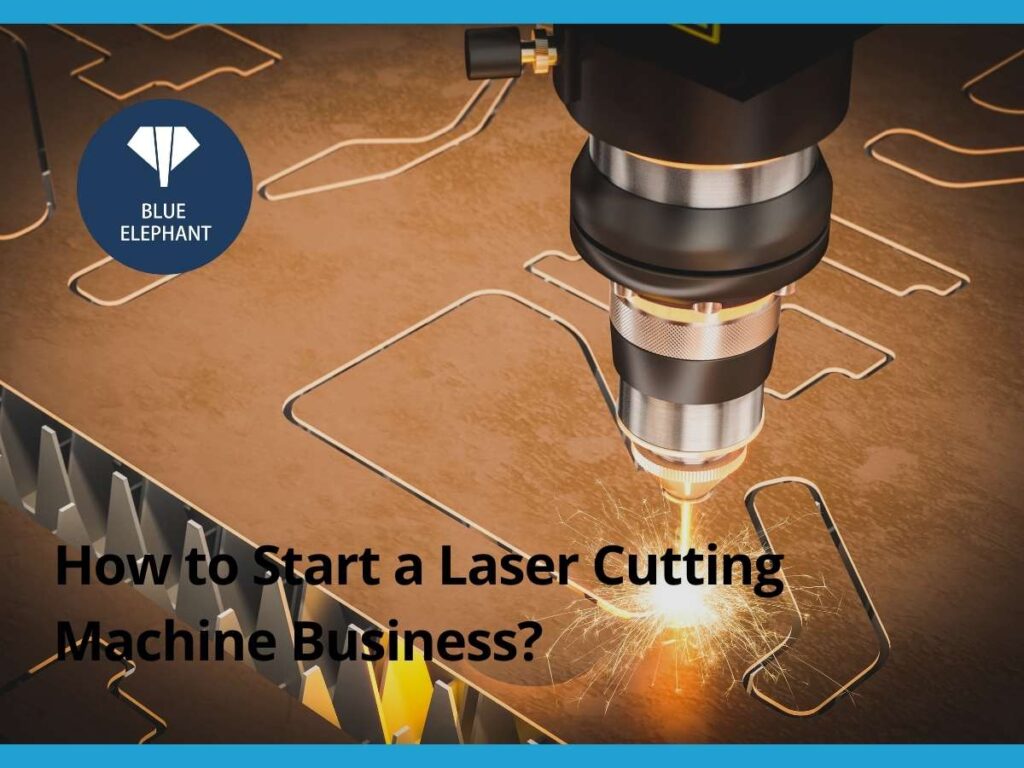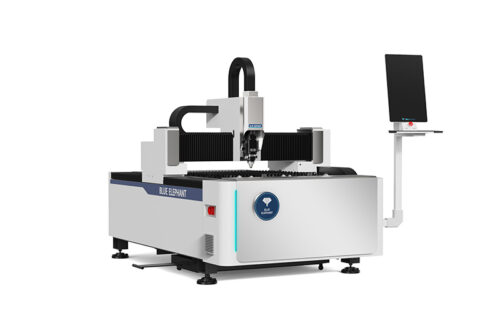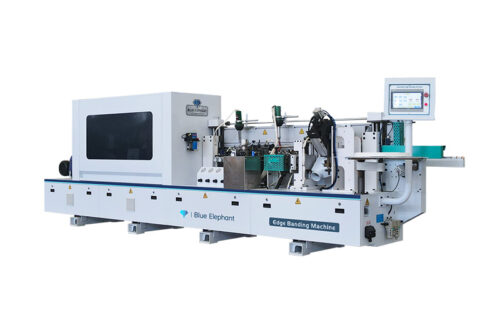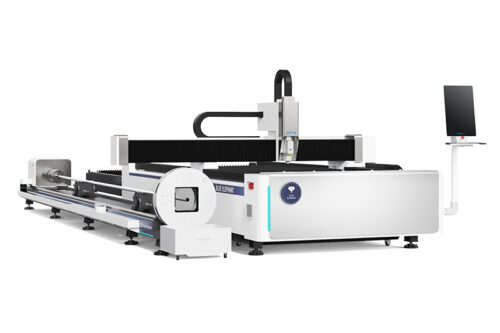I remember the first time I powered up my laser-cutting machine. The excitement was real, but so was the fear of failure. I had spent months researching, but nothing prepared me for the challenges ahead.
Starting a laser cutting business isn’t just about owning a machine—it’s about strategy and knowing where to start. Many entrepreneurs jump in without a clear plan and end up burning cash.
That’s why I created this guide. It’s based on real experiences, industry insights, and lessons learned from successful businesses. Whether you’re starting from scratch or scaling up, you’ll get practical steps that work.
Inside, you’ll find everything you need—from choosing the right machine to pricing your services and marketing your business. By the end, you’ll have a clear roadmap to launch with confidence.
So, let’s dive in!
Step#1 Choose the Right Laser Cutting Machine
The laser cutting machine you choose will make or break your business. That’s not an exaggeration. I’ve seen businesses struggle for months—wasting money, losing clients, and dealing with constant breakdowns—all because they picked the wrong machine.
You don’t want that.
Choosing the right laser cutter isn’t just about power or cutting speed. It’s about finding the right tool for your specific business goals. The machine you pick will define what materials you can work with, the quality of your cuts, and how efficiently you can fulfill orders.
CO2 vs. Fiber
This is the first major decision you need to make.
- CO2 Lasers: Perfect for cutting wood, acrylic, leather, glass, and plastics. If your business focuses on custom signage, home décor, or engraving, this is your best bet.
- Fiber Lasers: Built for cutting metals like steel, aluminum, and brass. If you’re targeting industrial manufacturing, automotive, or metal fabrication, this is what you need.
Power and Size
You might think, “I’ll just get the biggest, most powerful machine available.” But that’s a rookie mistake.
- For Precision Work (Jewelry, Intricate Engravings): A low-wattage (40W–100W) laser cutter is best.
- For Mid-Size Production (Woodwork, Acrylic Signage): Go for 100W–300W.
- For Heavy-Duty Industrial Cutting: You need 500W+ fiber lasers.
Also, consider bed size. If you’re cutting large sheets of material, a small work area will slow you down. But if your products are small and detailed, a massive cutting bed is unnecessary.
Software and Compatibility
Some laser cutters only work with specific software. Others struggle with common design programs like AutoCAD, Adobe Illustrator, or CorelDRAW. Before you buy, make sure:
- It’s compatible with the software you plan to use.
- It allows easy file transfers (USB, WiFi, cloud).
- The interface isn’t outdated or overly complicated.
Step#2 Develop a Business Plan
A laser cutting machine alone won’t make you money. A business plan will. Without one, you’re just another entrepreneur hoping things work out. And hope isn’t a strategy.
I’ve seen too many businesses fail—not because they lacked skills, but because they lacked a plan. A solid business plan keeps you focused, attracts funding, and ensures you start smart instead of scrambling later. If you’re serious about building a profitable laser cutting business, here’s what your business plan needs:
Set Clear Business Goals
Without goals, you won’t know if you’re succeeding. Set real, measurable targets for your business.
- Short-Term Goals (First 6–12 Months):
- Purchase and set up your laser cutting machine
- Get your first 10–20 paying customers
- Break even on your initial investment
- Long-Term Goals (Next 3–5 Years):
- Scale production and add new machines
- Expand into new markets or product lines
- Build a six-figure or seven-figure business
Your goals shouldn’t just be about revenue. Think about branding, customer acquisition, and efficiency.
Calculate Your Costs
A great product won’t save you if your business is bleeding money. Break down every cost so you know exactly how much capital you need to start.
- Equipment Costs: Laser cutter, ventilation, software
- Workspace Costs: Rent, utilities, insurance
- Material Costs: Wood, acrylic, metal, leather, glass
- Operational Costs: Labor, marketing, packaging, shipping
- Maintenance and Upgrades: Repairs, spare parts, software updates
Pricing and Revenue Model
It’s not enough to make great products—you need profitable pricing. Here’s a basic pricing strategy to start with:
- Cost-Based Pricing: Calculate your material, labor, and overhead costs, then add a markup (usually 30–50%).
- Market-Based Pricing: Research your competitors and price your services competitively.
- Value-Based Pricing: Charge based on the perceived value of your work, especially for custom or premium products.

Step#3 Secure Funding for Your Business
A solid business plan gives you direction. But without funding, it’s just words on paper. Now, it’s time to take action. Whether you’re bootstrapping or looking for outside investment, you need capital to cover equipment, materials, marketing, and operating costs.
The good news? You don’t need millions to start a laser cutting business. But you do need a smart funding strategy. Let’s break down your options.
Startup Costs
Before you look for funding, you need to know exactly how much to ask for. Break down your essential expenses:
- Laser Cutting Machine: $5,000 – $50,000+ (depends on type and power)
- Software and Design Tools: $200 – $2,000 (Adobe Illustrator, AutoCAD, etc.)
- Materials and Supplies: $500 – $5,000 (wood, acrylic, metal, packaging)
- Workspace Setup: $1,000 – $10,000 (rent, ventilation, safety equipment)
- Marketing and Branding: $500 – $5,000 (website, ads, social media)
Add these up, and you’ll get a realistic startup budget. This number is crucial, it helps you decide how much personal capital to invest and how much external funding to secure.
Self-Funding
If you have savings, bootstrapping is the fastest way to launch. No loans, no investors, no debt.
- Use personal savings to cover small startup costs.
- Starting a small home-based setup can reduce initial expenses.
- Reinvest profits to scale, rather than taking out large loans early.
If you can’t fully self-fund, you’ll need to explore outside financing.
Business Loans
Loans can help you scale faster, but they come with risk. If you go this route, only borrow what you can realistically repay. Best loan options for laser cutting businesses:
- SBA Loans: Low-interest loans backed by the Small Business Administration. Great for startups.
- Equipment Financing: Get a loan specifically for buying a laser cutter—the machine itself serves as collateral.
- Business Line of Credit: Flexible financing option—borrow only what you need, when you need it.
- Traditional Bank Loans: Higher requirements but lower interest rates than alternative lenders.
Investors and Partnerships
If you’re launching a large-scale operation, investors may be an option.
- Angel Investors: Individuals who fund startups in exchange for equity.
- Venture Capitalists: Best for high-growth businesses (but they’ll want a say in your company).
- Strategic Partnerships: Partner with a business that needs your laser cutting services in exchange for funding.

Step#4 Setting Up Your Laser Cutting Business
Now that you’ve secured funding, it’s time to set up your business for success. This step isn’t just about placing your laser cutter in a corner and getting to work. Your workspace, safety measures, and workflow will directly impact your efficiency, quality, and profitability.
If you set things up right from the start, you’ll avoid costly mistakes and build a business that runs smoothly from day one. Let’s break it down step by step:
Choose the Right Workspace
Before setting up, you need to decide where you’ll run your laser cutting business.
- Home-Based Business: If you’re starting small, working from home can help cut costs. However, you’ll need proper ventilation, noise control, and storage space for materials.
- Commercial Workshop: If you’re working with high-volume orders or industrial clients, you may need a dedicated workspace or warehouse to handle larger equipment and operations.
Optimize Your Workspace
Your workshop layout should be designed for productivity. Poor organization leads to wasted time, slower production, and unnecessary mistakes.
- Machine Placement: Your laser cutter should be in a stable, well-ventilated area with enough space for loading and unloading materials.
- Material Storage: Keep wood, acrylic, metal, and other materials organized and within easy reach.
- Work Tables & Assembly Area: Have a dedicated space for preparing materials, assembling products, and packing orders.
- Computer & Design Station: Place your computer near your machine for quick adjustments to cutting files and designs.
Proper Ventilation and Safety Measures
Laser cutting generates heat, smoke, and fumes. Without proper ventilation, you’re risking health hazards and machine damage.
- Fume Extraction: Invest in an exhaust system or air purifier to remove harmful fumes.
- Fire Safety: Have a fire extinguisher nearby and never leave the machine running unattended.
- Protective Gear: Use safety glasses, gloves, and masks when handling materials and laser components.
- Emergency Shut-Off: Ensure your machine has an easy-access emergency stop button in case of malfunction.
Set Up Your Laser Cutting Machine
A poorly calibrated laser cutter can ruin materials and cost you money. Follow these steps to ensure accuracy and longevity:
- Calibrate the Laser: Run test cuts to adjust the focus, power, and speed settings.
- Align the Mirrors: If your laser uses mirrors, make sure they are properly aligned for consistent cutting power.
- Test Different Materials: Each material reacts differently to the laser. Experiment with power and speed settings to optimize your cuts.
- Regular Maintenance: Clean the lens, mirrors, and filters regularly to keep your machine running smoothly.
Step#5 Source High-Quality Materials and Supplies
A laser cutter is only as good as the materials you feed it. Poor-quality materials lead to weak cuts, uneven engravings, and wasted money. If you want to produce high-end, professional-grade products, you need to source from reliable suppliers who offer consistency, durability, and competitive pricing.
One name that often comes up in the industry is Blue Elephant—a trusted supplier of CNC and laser cutting solutions. They understand that quality materials make all the difference when it comes to precision and durability. Let’s break down how to find the right materials and supplies for your business:
Know Your Materials
Not all materials are created equal. Choosing the right ones depends on your business niche and the capabilities of your laser cutter.
- Wood: Ideal for signage, furniture accents, and custom gifts. Look for birch plywood, MDF, or walnut for smooth cuts and clean edges.
- Acrylic: Perfect for modern signage, keychains, and illuminated designs. Go for cast acrylic instead of extruded, it engraves cleaner.
- Metal: If you’re using a fiber laser, stainless steel, aluminum, and brass are great options for precision cutting.
- Leather: Used for wallets, belts, and luxury goods. Ensure you buy vegetable-tanned leather for best results.
- Glass: Works well for engraving but requires special settings to avoid chipping.
Find Reliable Suppliers
Sourcing materials isn’t just about price—it’s about consistency and reliability. A great supplier will ensure that your materials are always available, of uniform quality, and delivered on time. Here’s where to look:
- Industry-Specific Suppliers: Companies like Blue Elephant specialize in materials tailored for laser cutting, ensuring premium quality.
- Local Wholesalers: If you need bulk materials, check with local distributors who can deliver faster and reduce shipping costs.
- Online Marketplaces: Sites like Alibaba, Uline, and Amazon offer variety, but be cautious—quality can be inconsistent.
- Specialty Shops: Some suppliers focus on eco-friendly or custom-finished materials that add uniqueness to your products.
Negotiate Pricing and Bulk Discounts
Buying in bulk saves money and prevents production delays. Most suppliers offer tiered pricing, the more you buy, the lower the cost per unit.
- Ask for Wholesale Rates: If you plan to order regularly, request special pricing for repeat customers.
- Compare Multiple Suppliers: Don’t settle for the first price you see, negotiate with at least three vendors.
- Look for Free Shipping Deals: Some suppliers offer free or discounted shipping on bulk orders.
Step#6 Build a Portfolio and Offer Sample Products
Now that you’ve sourced high-quality materials, it’s time to put them to work. Your portfolio is your proof. It’s what convinces potential clients that you can deliver precision, creativity, and quality. Without it, you’re just another business making claims with nothing to back them up.
If you want customers to trust you, pay you, and keep coming back, you need to show them what you’re capable of. That’s where samples and a professional portfolio come in.
Create a Portfolio
Your portfolio should answer one question: Why should someone choose your laser cutting services over the competition?
- Showcase a Variety of Projects: Highlight different materials (wood, acrylic, metal) and applications (signage, gifts, industrial parts).
- Focus on Your Niche: If your business specializes in custom signage, don’t fill your portfolio with jewelry designs. Make it relevant to your target audience.
- Use High-Quality Photos: Blurry, poorly lit images make your work look amateur. Invest in a good camera or hire a product photographer.
- Include Before-and-After Shots: Show the raw material next to the finished product—it highlights the precision of your work.
- Add Client Testimonials: If you’ve already completed orders, include customer feedback to build trust.
Offer Sample Products
Samples are one of the fastest ways to turn interest into sales. Many businesses won’t commit to a large order unless they see your quality firsthand.
- Create Branded Sample Kits: Offer small sample cuts or engraved items with your logo. This builds brand recognition.
- Send Free Samples to Target Clients: If you’re targeting local businesses, event planners, or interior designers, send them a custom sample that showcases your work.
- Offer Low-Cost or Discounted Samples: Some customers may not want free samples but will pay a small fee for a trial product. This filters out serious buyers from casual browsers.
- Use Samples to Test New Designs: Before launching a new product line, produce small batches and collect feedback from potential customers.
Step#7 Market Your Laser Cutting Business
Your portfolio is built, your samples are out there, and now it’s time to turn those into real paying customers.
Having incredible work means nothing if no one knows about it. If you want to attract high-value clients, secure repeat orders, and scale your business, you need a solid marketing strategy.
Marketing isn’t about luck. It’s about putting your work in front of the right people, at the right time, in the right way. Let’s break down exactly how to do that:
Build an Online Presence
Most customers will find you online first, so your digital presence needs to be strong, professional, and easy to navigate.
- Create a Professional Website: Show your portfolio, pricing, and contact info clearly. Make it easy to request quotes.
- Leverage SEO: Optimize your website so it appears when people search for terms like “custom laser cutting services near me.”
- Post on Social Media: Share behind-the-scenes videos, customer testimonials, and new projects on Instagram, LinkedIn, and Pinterest.
- Use Google My Business: If you have a local workshop, set up your Google profile to appear in local searches.
Use Paid Advertising
Organic marketing takes time. If you want immediate leads, paid ads can put your business in front of the right audience.
- Google Ads: Target local businesses searching for “custom laser cutting” services.
- Facebook and Instagram Ads: Run targeted campaigns showcasing your best work to business owners and creatives.
- LinkedIn Ads: If you serve industrial or corporate clients, LinkedIn is a goldmine for B2B connections.

Step#8 Set Your Pricing
Marketing brings in leads, but pricing determines your profit. I learned this the hard way. When I first started, I priced my laser cutting services too low just to land clients. I thought if I kept my prices lower than the competition, I’d win more business. And I did—for a while. But then reality hit.
My workload tripled, but my profit margins shrunk. I was working harder than ever, yet barely making enough to cover materials, maintenance, and time. I had to rethink my pricing strategy, and when I did, my business became profitable overnight. Here’s how to price smart from the start so you don’t fall into the same trap:
Know Your Costs
Before setting prices, you need to understand your expenses. If your pricing doesn’t cover costs plus profit, you’re working for free. Break down your costs into:
- Material Costs: Wood, acrylic, metal, leather, or whatever you’re cutting
- Machine Operating Costs: Electricity, laser tube replacement, maintenance
- Labor Costs: Time spent designing, cutting, assembling, finishing
- Overhead Costs: Rent, packaging, marketing, software, taxes
Choose a Pricing Strategy
There’s no one-size-fits-all approach to pricing, but these are the most effective strategies:
- Cost-Based Pricing: Take your total costs and add a markup (usually 30–50%) to ensure profit.
- Market-Based Pricing: Research what competitors charge for similar services and adjust accordingly.
- Value-Based Pricing: Charge based on the perceived value of your work—custom, high-end products command higher prices.
- Bulk Pricing: Offer discounts for larger orders to attract repeat clients.
I personally found that mixing cost-based and value-based pricing worked best. I covered my expenses, but also charged more for highly detailed, custom work.
Step#9 Scale and Expand Your Business
Once your pricing is set and your business is running profitably, the next step is growth.
Scaling isn’t just about getting more customers—it’s about increasing efficiency, boosting revenue, and expanding strategically without overextending your resources. If you scale too fast without the right systems, you risk burnout, production bottlenecks, and inconsistent quality. A structured approach will ensure you grow sustainably and profitably. Here’s how to do it:
Increase Production
As demand grows, you need to produce more without delays or quality issues.
- Invest in Additional Machines: If your laser cutter is constantly booked, a second machine doubles your capacity.
- Automate Repetitive Tasks: Use software to streamline order processing, invoicing, and design modifications.
- Optimize Your Workflow: Rearrange your workspace to reduce downtime and improve efficiency.
- Hire Skilled Help: Whether it’s a production assistant or a designer, expanding your team frees you up for high-value tasks.
Expand Your Product Offerings
One way to grow is by offering new products or services that complement your existing business.
- Custom Engraving Services: Expand into personalized branding, promotional items, or corporate gifts.
- New Material Options: If you’ve been working with wood and acrylic, consider adding metal, glass, or leather.
- Pre-Designed Products: Instead of only offering custom orders, sell ready-made laser-cut designs that require minimal modifications.
- Subscription Services: Offer monthly design packages for businesses that need regular laser-cut items.
Target Bigger Clients and Bulk Orders
Scaling successfully often means shifting from small one-off orders to larger, high-value contracts.
- Partner with Retailers: Sell wholesale laser-cut products to boutiques, gift shops, and e-commerce brands.
- Offer Corporate Packages: Many businesses need bulk laser cutting for branding and promotional products.
- Bid on Industrial and Manufacturing Contracts: If you have a fiber laser, target companies that need precision metal cutting.
- License Your Designs: Sell your digital laser-cut designs to other laser cutting businesses that don’t create their own files.
Conclusion
Starting a laser cutting business isn’t just about owning a machine—it’s about strategy, skill, and smart execution. From choosing the right equipment to pricing your services and scaling up, every step matters.
I know firsthand how overwhelming it can be, but the only real mistake is waiting too long to start. The best time to take action is now.
Are you ready to turn your laser cutting ideas into a thriving business?
Contact us today and let’s make it happen!
Learn More: Recommended Reads
Interested in more? Here are some additional articles with insights and tips to keep you informed:
How to Start a CNC Cutting Business?
Still haven’t found what you’re looking for? Don’t hesitate to contact us. We’re available around the clock to assist you.
Learn More: Recommended Reads
Interested in more? Here are some additional articles with insights and tips to keep you informed:
Still haven’t found what you’re looking for? Don’t hesitate to contact us. We’re available around the clock to assist you.













